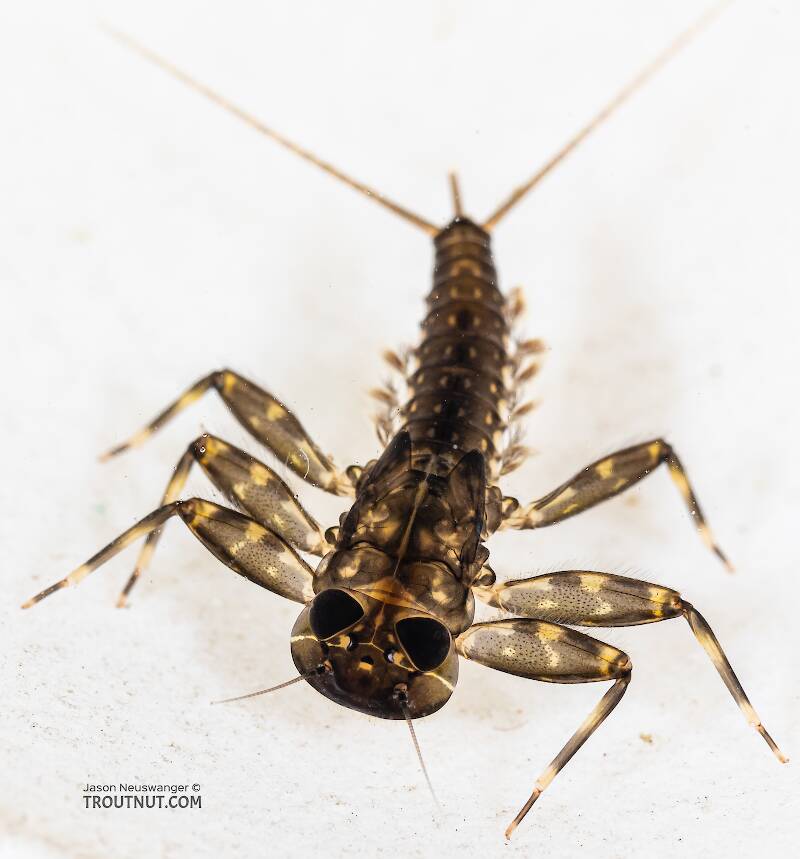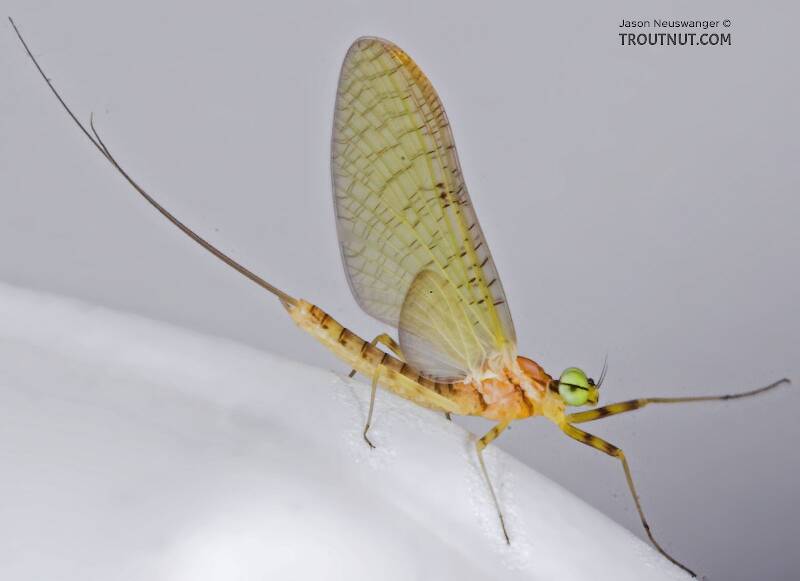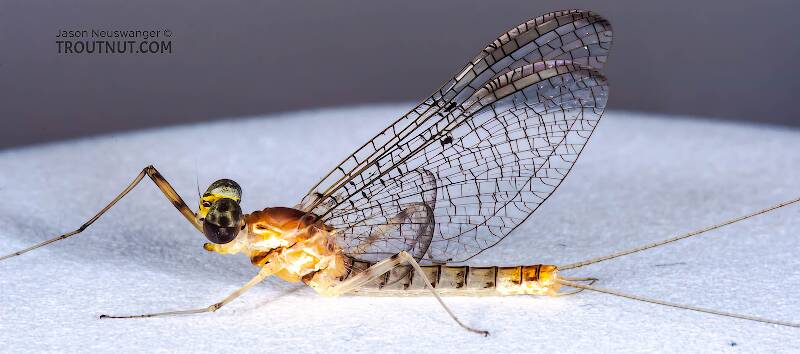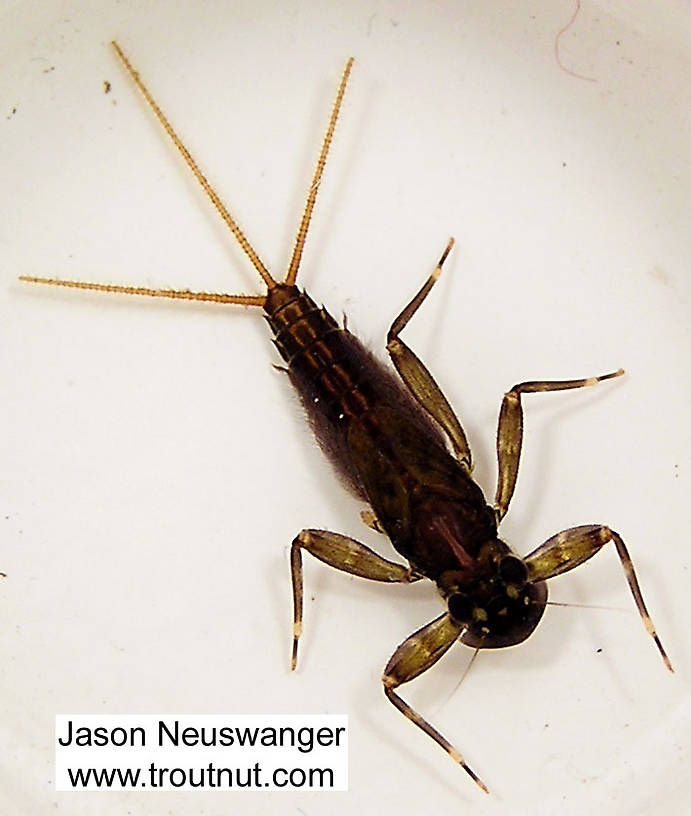
Salmonflies
Pteronarcys californica
The giant Salmonflies of the Western mountains are legendary for their proclivity to elicit consistent dry-fly action and ferocious strikes.
Featured on the forum

As far as I can tell, this species has only previously been reported from one site in Oregon along the Columbia gorge. However, the key characteristics are fairly unmistakable in all except for one minor detail:
— 4 small yellow spots on frons visible in photos
— Narrow occipital spinule row curves forward (but doesn’t quite meet on stem of ecdysial suture, as it's supposed to in this species)
— Short spinules on anterior margin of front legs
— Short rposterior row of blunt spinules on abdominal tergae, rather than elongated spinules dorsally
I caught several of these mature nymphs in the fishless, tiny headwaters of a creek high in the Wenatchee Mountains.
— 4 small yellow spots on frons visible in photos
— Narrow occipital spinule row curves forward (but doesn’t quite meet on stem of ecdysial suture, as it's supposed to in this species)
— Short spinules on anterior margin of front legs
— Short rposterior row of blunt spinules on abdominal tergae, rather than elongated spinules dorsally
I caught several of these mature nymphs in the fishless, tiny headwaters of a creek high in the Wenatchee Mountains.

Troutnut is a project started in 2003 by salmonid ecologist Jason "Troutnut" Neuswanger to help anglers and
fly tyers unabashedly embrace the entomological side of the sport. Learn more about Troutnut or
support the project for an enhanced experience here.
Golden Duns
Like most common names,"Golden Dun" can refer to more than one taxon. They're previewed below, along with 4 specimens. For more detail click through to the scientific names.
Mayfly Genus Stenacron
These are sometimes called Golden Duns.
The species in this genus were formerly classified in Stenonema. See the genus Maccaffertium for details. Only one species, Stenacron interpunctatum, is important to fly fishermen. See its page for details.
See 5 more specimens...
Mayfly Species Heptagenia pulla
These are sometimes called Golden Duns.
This elegant species may produce fishable hatches.

This specimen is interesting because Heptagenia pulla has not been reported from Washington or neighboring states (Saskatchewan is the closest), yet the distinctive key characteristics are clear. Furthermore, it might even be a species not listed on this site—Jacobus et al. (2014) writes, "the northern and western specimens of H. pulla may in fact be a synonym of the Palearctic species H. dalecarlica Bengtsson (Kjaerstad et al. 2012) and the true H. pulla may be restricted to eastern North America."
It keys to the genus Heptagenia because the tarsal claw has a single basal tooth, and the gills on segment 7 have fibrils.
For the species key in Jacobus et al. (2014):
1. The left mandible is planate, whereas the right mandible is angulate.
2. The labrum is much wider than long.
3. There's a thin light-colored streak lateral to the eye on the head.
It keys to the genus Heptagenia because the tarsal claw has a single basal tooth, and the gills on segment 7 have fibrils.
For the species key in Jacobus et al. (2014):
1. The left mandible is planate, whereas the right mandible is angulate.
2. The labrum is much wider than long.
3. There's a thin light-colored streak lateral to the eye on the head.
See 2 more specimens...
References
- Jacobus, L. M., Wiersema, N.A., and Webb, J.M. 2014. Identification of Far Northern and Western North American Mayfly Larvae (Insecta: Ephemeroptera), North of Mexico; Version 2. Joint Aquatic Science meeting, Portland, OR. Unpublished workshop manual. 1-176.




